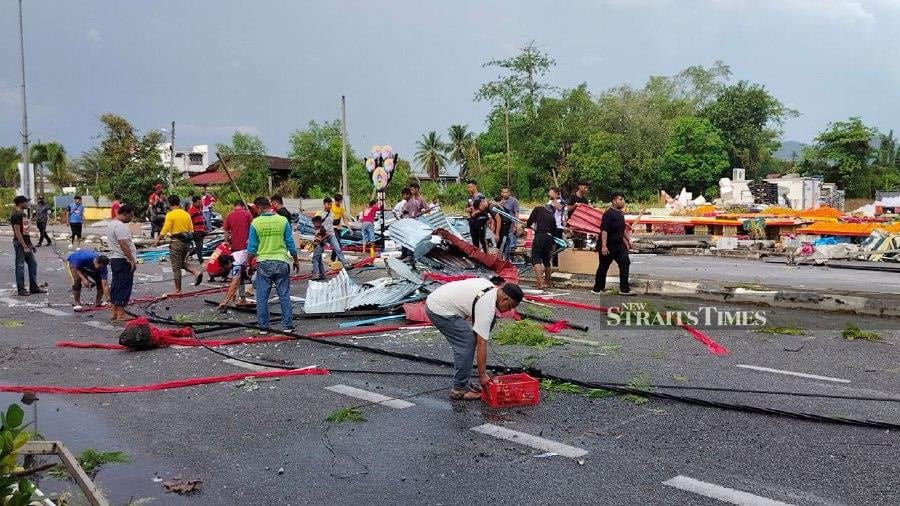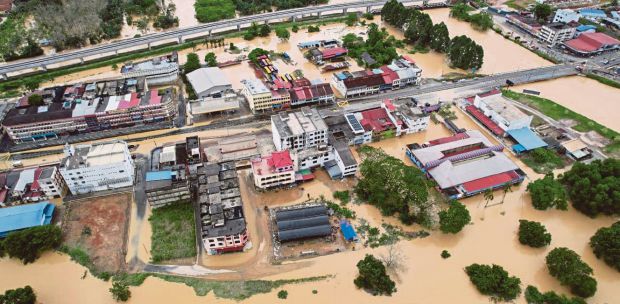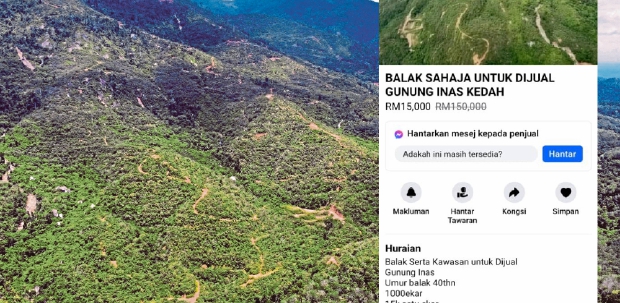Every year in Malaysia, lives are lost to natural disasters.
Every year, too, we lose millions, if not billions, of ringgit.
It was no different in 2022. If anything, it seemed worse.
This year saw the second highest number of deaths in a single natural disaster in Malaysia — the Batang Kali landslide. Only the Highland Towers collapse in 1993 — deemed a natural disaster because the reason for the collapse was the movement of water underground — claimed more lives.
Due to our relatively "safe" location inside the Pacific Ring of Fire, we do not have to deal with other natural disasters like volcano eruptions. Earthquakes do occur here, but only in certain areas and that, too, not strong ones.
What we do have, however, are landslides, floods, storms and monsoons.
The New Straits Times (NST) takes a look at some of the disasters we encountered this year.
BATANG KALI

The deadliest incident still lives fresh in all our memories as it happened only two weeks ago.
In the wee hours of Dec 16, when most if not all the staff and campers at the Father's Organic Farm located along Jalan Genting-Batang Kali were asleep, a massive landslide came sweeping down the slopes from above.
Of the nearly 100 people there, 61 made it out alive, with only a handful injured. By the end of search-and-rescue (SAR) operations nine days later, 31 bodies were retrieved, most of whom were teachers, staff and students of SJKC Mun Choong, as well as their friends and family members.
Natural Resources, Environment and Climate Change Minister Nik Nazmi Nik Ahmad said the landslide was caused by slope failure.
The incident at Father's Organic Farm, however, was not the first deadly landslide to hit the country in 2022.
TAMAN BUKIT PERMAI

On March 10, four people died and another escaped with light injuries after a landslide struck Taman Bukit Permai in Ampang at 5.54pm.
The slope adjoining 102 houses came sliding down during a heavy downpour and completely wiped out at least three of the 15 affected houses.
Five people were buried under the soil and a SAR operation was launched to trace those reported missing.
GUNUNG INAS

On July 4, strong waves following a water surge phenomenon in upstream Gunung Inas in Baling, Kedah, ravaged 40 villages in the Kupang sub-district and three other villages in the district.
It is estimated that more than 1,000 homes and business premises were damaged, with at least 17 homes swept away.
A woman, her 14-year-old son and her pregnant daughter-in-law were killed when their home in Kampung Iboi, which was ground zero of the tragedy, was swept away.
The then environment and water minister, Datuk Seri Tuan Ibrahim Tuan Man, was reported as saying that studies conducted by the ministry revealed that the flooding happened because a reservoir built on the Musang King durian plantation at Gunung Inas had burst.
FLOODS

This year also saw massive floods ravaging the northeastern states of Kelantan, Terengganu and Pahang as well as other states like Johor, Perak and Sabah.
The Malaysian Meteorological Department (MetMalaysia) said the northeast monsoon, like it has in previous years, would lash the east coast of the peninsula with torrential rains until the end of this month.
However, its director-general, Muhammad Helmi Abdullah, is not expecting the west coast of Peninsular Malaysia to be battered in a similar manner this year.
Helmi told the NST the once-in-a-century floods that left most parts of the peninsula underwater last year occurred due to a low-pressure system that moved across the peninsula concurrently with the strong monsoon winds.
MetMalaysia had earlier predicted that at least four to six monsoon episodes with heavy downpours could potentially occur until March, possibly triggering floods.
At the height of the flooding so far, almost 68,000 people were evacuated from their homes.





